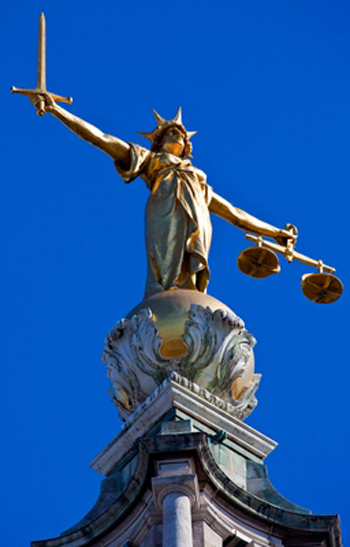by Ken Lopez
Founder/CEO
A2L Consulting
Since the founding of our attorney-led litigation consulting business 19 years ago, I've been asked this question hundreds of times: "why would I need an attorney to help me prepare my litigation graphics?" It's an understandable question, and I have a very good answer - indeed 21 good answers.
Before I explain why an attorney or litigator can help a fellow litigator better than others can, a review of A2L's history is in order.
I founded A2L (then Animators at Law) as a litigation graphics consultancy after I finished law school in the 1990s. After a few years in the industry, I recognized that litigators who build visual aides for trial and work with other creatively-minded lawyers to do so get better results than those who work alone or those who work only with a graphic artist. By the latter part of the 1990s, we started calling this work "litigation consulting," and an industry was born. Here is a 1999 article about how our piece of the litigation graphics industry developed.
Back then, litigation graphics industry leaders were mostly engineering firms. They were great at illustrating and very poor at persuading. So, firms like A2L and others came to dominate the industry and were quickly relied upon by the legal industry's top trial attorneys.
Now, all these years later, with the majority of litigation rapidly shifting from large law firms to midsize law firms, I'm again hearing questions about why lawyers should be helping other lawyers with litigation graphics and more. I think the frequency of questioning has increased because midsize law firms are trying to understand how best to win big cases without spending huge sums of money. Fortunately, litigation consulting services are quite inexpensive compared to legal fees or e-discovery fees, and the ROI is just enormous.
From some of these newer big-ticket litigation market entrants, we're hearing that they are planning to skip the litigation graphics development stage and just rely on their trial tech for visuals. Unfortunately, this means that some midsize law firms are making the classic mistake of believing they are using litigation graphics when they are simply displaying electronic evidence and text PowerPoint slides via a projector in the courtroom.
Some are planning to use in-house law firm marketing graphics staff or a freelance graphic artist. In most cases, that's about as likely to produce a successful result as hiring a 3rd year law student to 1st chair a trial. Sadly, it's pretty common for us to be engaged to rescue a trial team on the eve of or even mid-trial that has made these mistakes.
These well-intentioned but misguided uses of "graphics" may not be actionable malpractice yet, but I bet they will be one day. If you think that statement is strong, consider that judges are already demanding that litigators understand technology at a fairly complex level when it comes to e-discovery. Can the expansion of the duty of competence to include competent visual advocacy be far behind?
So, to understand why a litigator is your best litigation graphics consultant, I offer 21 observations based on watching visually creative litigators on our team serving as litigation graphics consultants, how they work with trial counsel and the good results they regularly achieve:
- Using a Litigator as Your Litigation Graphics Consultant Saves Money. Imagine being able to speak in lawyer short hand about amici, claim language, market power, causation, Rule 403, bioequivalence and hundreds of other concepts that you don't want to take five minutes to explain during the run up to trial. When you have a litigator serving as your litigation graphics consultant, you don't have to spend your client's money training someone about a legal concept or procedure. They already understand what the fact-finders will not, and they will automatically design this into the presentation.
- Using a Litigator as Your Litigation Graphics Consultant Saves Time. Time is money, so the same reasons listed above for money apply here for time too. Additionally, commonsense should answer the questions: who is going to understand and process your case faster, a visually creative litigator with trial experience or a project manager/graphic artist? They're all good people, but only one will save you time.
- Using a Litigator as Your Litigation Graphics Consultant Removes Stress. I have a couple of pet peeves, although the team at A2L might tell you the list is longer than that. One pet peeve of mine is that I really don't like having the same conversations more than once. I think most litigators feel similarly especially during pre-trial prep. A litigator turned graphics consultant is much more likely to recall details or be in a position to find the answer on their own. This saves the trial litigator time, money and most importantly, stress.
- Using a Litigator as Your Litigation Graphics Consultant Gets You Graphics + Trial Experience. Nearly all good litigators tell me that they would love nothing more than to go to the courthouse and watch trials they are not involved in and learn from watching peers. Unfortunately, they cannot due to the incessant pressure to keep billing hours. Until the days comes when cameras are finally allowed in federal courtrooms and we can all learn from watching the best, one of the best ways to get meaningful training is to use your litigation graphics consultant a bit like a coach. Remember, they watch your peers all of the time, and they have been exactly where you are.
- Using a Litigator as Your Litigation Graphics Consultant Is Like an Insurance Policy. One hopes to not use insurance, but we're all grateful when it's there. The same is true for your litigation consultant. If you really rely on them and invite them to be there for all or part of your trial, you have a cost-efficient method to adapt as the trial unfolds. They can anticipate new visuals that need to be used and put their development in motion midday. They can offer new strategies at a peer level. They can be a non-judgmental sounding board.
- Using a Litigator as Your Litigation Graphics Consultant Helps You in the Venue. Chances are we have spent time in your venue. We even write about trying cases in popular venues like SDNY. Local counsel is a big help, but why not rely on a litigator who likely has expertise persuading the jury pool or judge using visuals and who has probably watched trial lawyers from many firms in the venue?
- Using a Litigator as Your Litigation Graphics Consultant Is a Bit Like Getting Graphics AND a Trial Consultant. Litigators who are also litigation graphics consultants blur the lines between what is considered a trial consultant and a litigation graphics consultant. They are an especially nice fit when there is not enough budget for a proper mock trial.
- Using a Litigator as Your Litigation Graphics Consultant Means You'll Likely Get More Meaningful Feedback. A lot of litigators say they like to get commonsense feedback from family and non-attorney staff. I agree that helps, but sometimes non-attorneys give bad advice like encouraging counsel to ask a jury to put themselves in the shoes of the injured and other rookie mistakes. A litigator knows what advice helps and what distracts.
- Using a Litigator as Your Litigation Graphics Consultant Means They're Not (as) Scared of You. A lot of litigators I know appreciate that a good litigation graphics consultant is honest with them. Too often they are surrounded with too many "yes" people. Your litigation graphics consultant is trained to tactfully deliver honest feedback after asking permission to do so.
- Using a Litigator as Your Litigation Graphics Consultant Means Your Relationship With In-House Is Understood. A good litigation graphics consultant who is a litigator will keep watch over your relationship with in-house counsel. It is not unusual to be approached by an in-house lawyer during a mock trial or during trial who wants our litigation consultant's opinion of outside counsel. A good litigation consultant knows how to support counsel even when no one is looking.
- Using a Litigator as Your Litigation Graphics Consultant Means that You Have Someone Who Understands Law Firm Politics On Your Side. We all wish the workplace was politics-free, but that is not realistic. Whether there is a subtle battle for 1st chair, whether there are hidden relationships on the trial team, whether someone is underprepared, we have seen it all - and you'll never hear about it. Keeping yourself out of the politics is a task best left to those who understand it, and a litigator who has worked at a law firm knows best.
- Using a Litigator as Your Litigation Graphics Consultant Means You Know You Have Someone Who REALLY Understands Confidentiality. I've heard trial techs and graphic designers talking about degrees of confidentiality, and I hope that we can all agree it's really a binary issue. When you have a litigator as your graphics consultant, your confidential information is better protected.
- Using a Litigator as Your Litigation Graphics Consultant Means They Have Ethical Obligations. No matter where a lawyer goes, they have ethical obligations. This is certainly true when working in litigation, regardless of the role they are playing. Woundn't it be nice to know your consultant has a higher duty when supporting your team?
- Using a Litigator as Your Litigation Graphics Consultant Means They Will Understand How to Treat a Judge and Clerks. In law school, we were all taught to treat the court with honor and respect. A graphic designer may be a respectful person, but they have not been trained like us, right? I think it matters when we have to talk to clerks, interact with opposing counsel and in how we dress for court.
- Using a Litigator as Your Litigation Graphics Consultant Means You Have Another Warrior on Your Side. I referenced one of the reasons I started our firm at the beginning of this article. In 1995, I was disappointed to see engineering firms playing such a large role in litigation as litigation graphics firms do. In retrospect, I was right. Having passionate advocates work in parallel with the trial team to develop a visual presentation is like having one more believer - as opposed to just one more follower - on your team.
- Using a Litigator as Your Litigation Graphics Consultant Ensures Appearance Will Be Considered for All Personnel. I am very concerned with how people dress for court or even a client meeting. In my jurisdiction, shirts that are not solid and white are still frowned upon by many judges. A litigator will help make sure that litigation decorum is followed for the litigation support team.
- Using a Litigator as Your Litigation Graphics Consultant Helps Prevent Typos. One of my pet peeves is shared by many litigators. I really cannot stand it when typos make it onto a draft of a demonstrative for trial. Of course, one can never occur at trial, because it would damage the credibility of the trial team. Who do you think is less likely to make a mistake, a litigator or a graphic designer? I can tell you from decades in this industry that the answer is the former, 100-fold to 1.
- Using a Litigator as Your Litigation Graphics Consultant Gives You an Observer Free from the Details of the Case. Hard as we may try, we litigation consultants will never know the case as well as trial counsel. This is a feature, not a bug. Staying out of the weeds allows an attorney litigation graphics consultant to offer meaningful advice about how to persuade the fact-finder(s) while not getting lost in the details.

- Using a Litigator as Your Litigation Graphics Consultant Means You Have a Professional Storyteller at Your Disposal. Good litigation graphics consultants are always pushing a trial team to clearly articulate a meaningful and emotional story in a case - even in a seemingly dry patent trial. If you have not watched our recent storytelling in litigation webinar yet, you should (or share it with someone you know).
- Using a Litigator as Your Litigation Graphics Consultant Gets You a Ton of Trial Experience at a Low Price. If you are in house counsel, wouldn't you want to have the benefit of another trial lawyer in the room acting as a support system to the team. You might be surprised to learn that we could go to trial more than 50 times in a given year. That's more than any single major law firm. For a fraction of the price of another trial lawyer, you get the benefit of that experience plus the value created during the develop of litigation graphics.
- Using a Litigator as Your Litigation Graphics Consultant Means You Indirectly Learn from Your Peers. As litigation consultants we see both good and bad trial teams. Cross pollination of good ideas and tactics between firms is pretty rare. If you want to learn from your peers, one of the best and least expensive ways to do so is to ask a qualified attorney litigation graphics consultant what they see that works well.
Other A2L Consulting articles related to litigation consultants and litigation graphics:
- 6 Triggers That Prompt a Call to Your Litigation Consultant
- 11 Small Projects You Probably Don't Think Litigation Consultants Do
- 9 More Things Midsized Firms Should Know About Litigation Consultants
- 11 Things Your Colleagues Pay Litigation Consultants to Do
- 16 Litigation Graphics Lessons for Mid-Sized Law Firms
- The Very Best Use of Coaches in Trial Preparation
- Accepting Litigation Consulting is the New Hurdle for Litigators









Leave a Comment